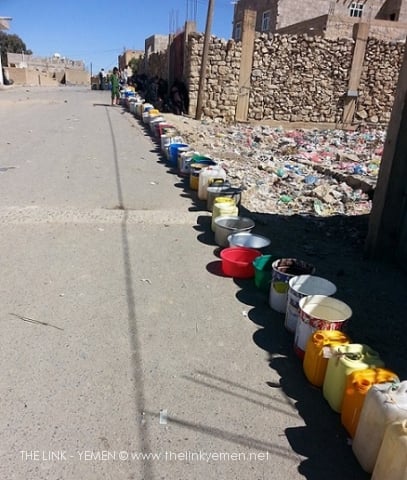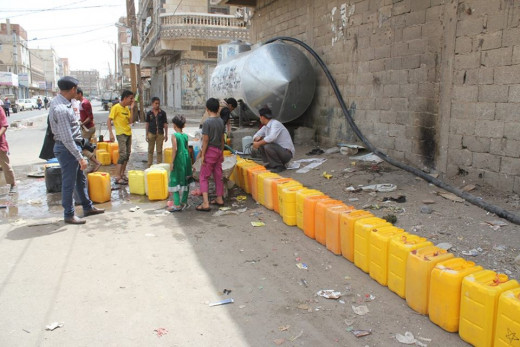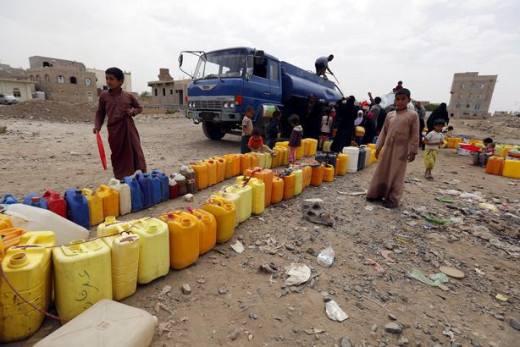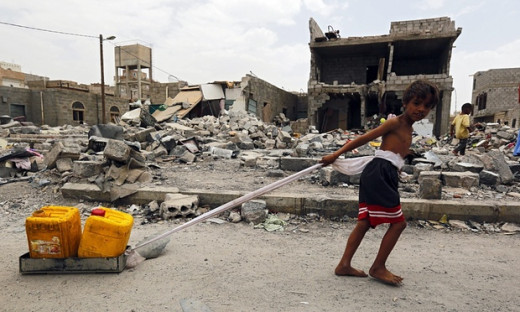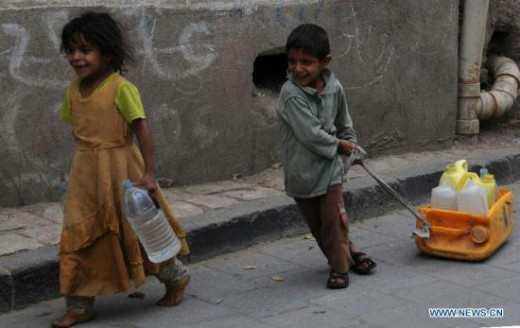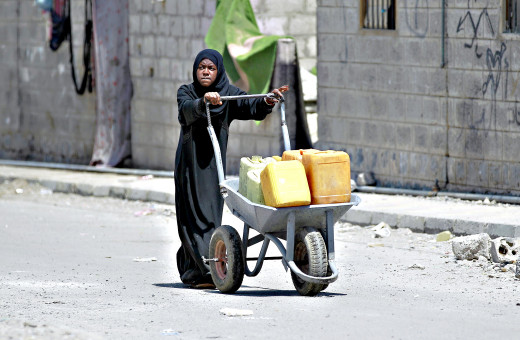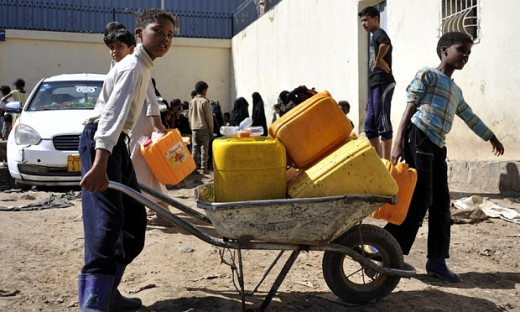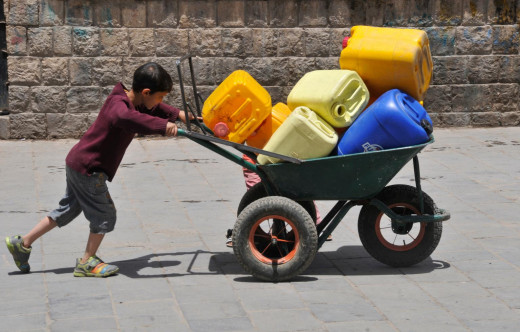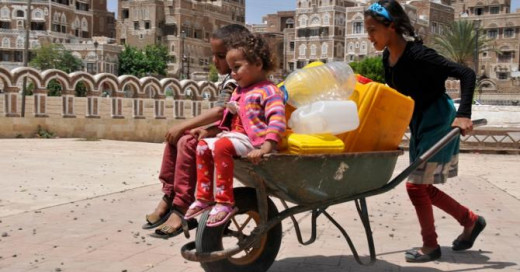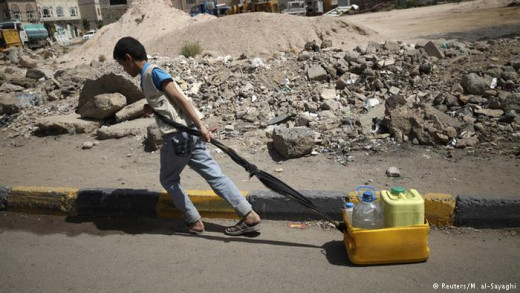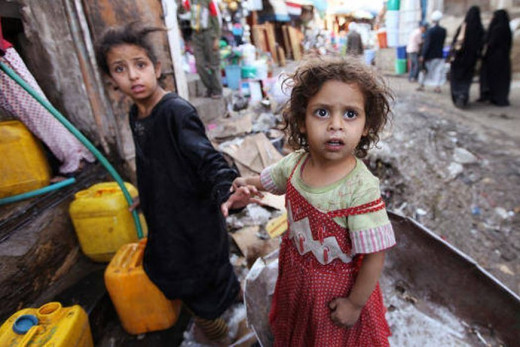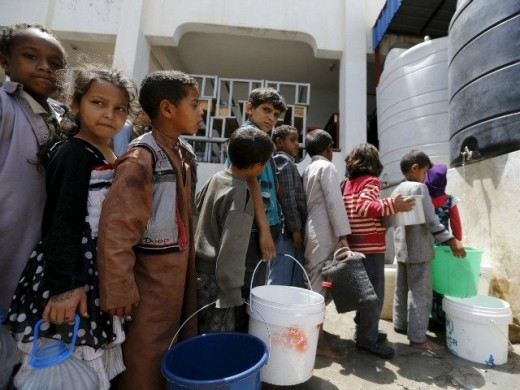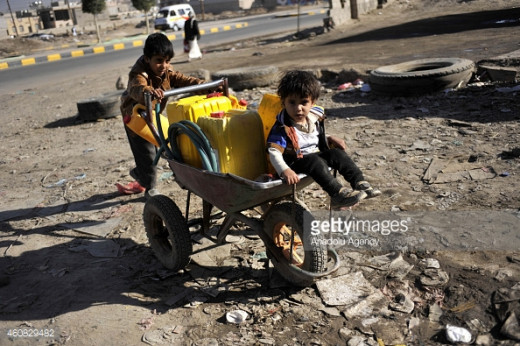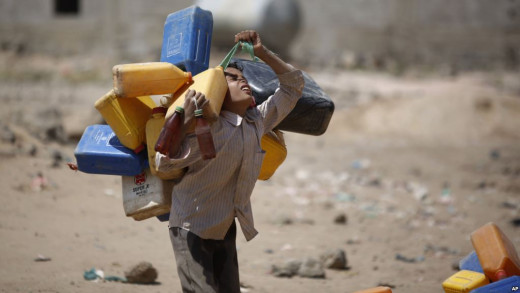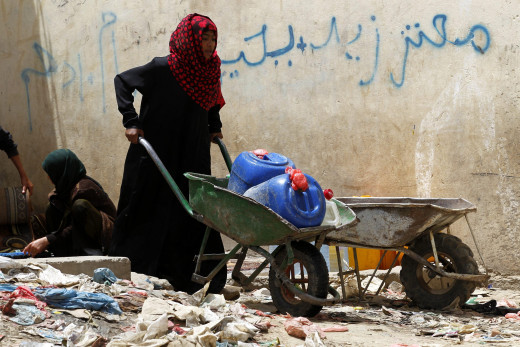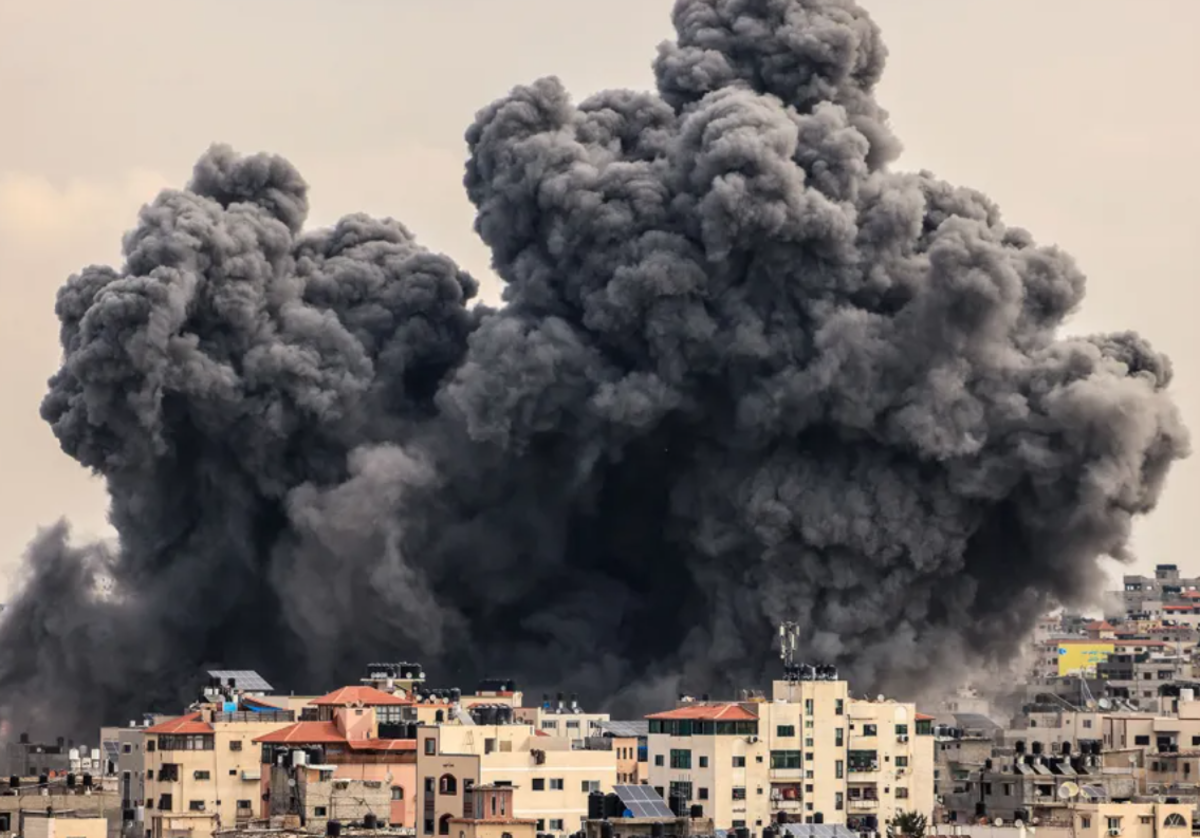Consequences of Current War in Yemen on People and Water Crisis
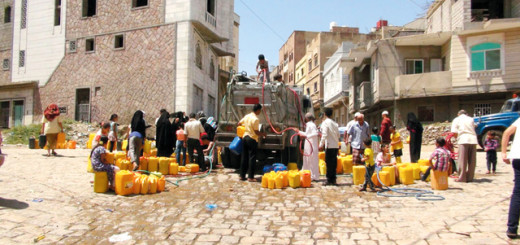
Water and the War in Yemen
War, Water Crisis, and People in Yemen
Every war happening in everyplace in this world creates negative and calamitous effects on civilians more than it creates on individuals belonging to military and other armed forces. The current war in Yemen is not so far from this real and tragic discussion. The death toll in the country reaches a high number closing to 6000 and other causalities reaches to nearly 28,000 during the nine months of war according to the latest reports published by international local and foreign agencies including the United Nations. This number is being daily increased due to the continuous ongoing clashes occurring between warring parties in different cities in Yemen and also due to the ongoing airstrikes of the Saudi-led coalition forces from air.
Nowadays under the civil war and under the nonstop airstrikes of warplanes, civilians in Yemen suffer more than the past especially in the frontline cities such as Taiz, Marib, Sa’adah, Al-Jawf, Aden, Abyan, Sana’a, and others. This issue seems for a large extent an overlooked thing by warring parties. This in turn accumulates and complicates the civilians’ problems including having their daily needs for surviving. Lack of necessary ways of life for ordinary people in Yemen represents a daily alarming obsession for all breadwinners and those who majorly depend on them. Among these indispensible necessities are securing the sources of pure water used for domestic needs such as drinking, cooking, showering, and also washing. Several critical problems concerning water issues were existent in the past when Yemen had no war at all and these problems are being intensified now due to the frequent fierce confrontations and other inhumane situations taking place on land. This is in turn makes the water as a very precious commodity for surviving which stands in the thin barrier existing between death and life for Yemenis.
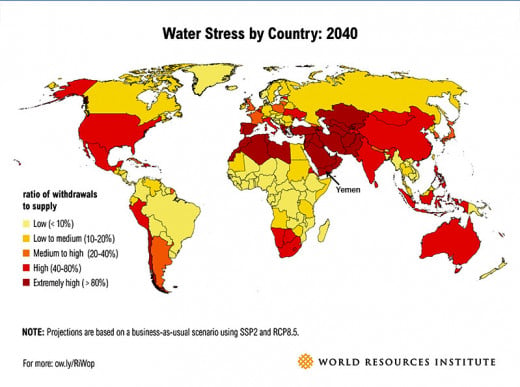
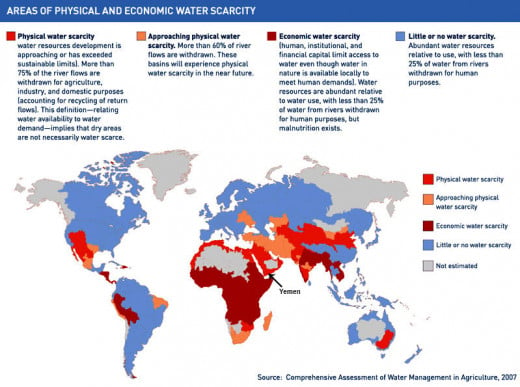
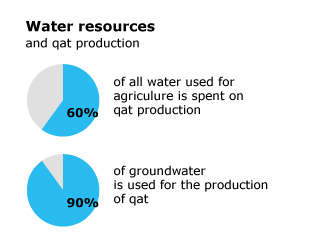
Serious Indicators Concerning Water Crisis in Yemen
It is known that Yemen—with its semi-arid regional location—has many troubles concerning water resources which sometimes render having a sip of pure water in a remote mountainous village as having a magic mouthful taken from the Heaven itself. Not so far from this and according to the statistics published by the World Resources Institute (WRI) in 2000, the annual withdrawal of available resources in Yemen is 70.7 percent which represents a high percentage among the Third World countries. This includes consumption of water from internal renewable resources such as rivers, groundwater from rainfall, and desalination plants across the seas. In the same line and according to the reports published by the UNICEF in 2014, only 140 cubic meters of water on average is available annually for a Yemeni person compared to 1000 cubic meters for a person living in the region of North Africa. Also, another report—which has been carried in 2012—claims that more than 50 percent of the population in Yemen does not have access to suitable sources of water. On the other hand, one of the academic Yemeni studies argues that nearly 60,000 wells have been arbitrarily dug in Yemen during the last 50 years in which 13,500 of them are located in Sana’a city alone. Other academic studies suggest that Sana’a Water Basin is imminently at risk of water depletion.
All these statistics—which indicate many shocking and disturbing facts—lead us to believe that one day in the recent future Yemen might have no water for even drinking at all. This suggestion is strongly supported by the worrying reports and articles about dedicating a high percentage of water in Yemen (i.e., nearly 60 to 70 percent of extracted groundwater) for producing the water-intensive cursed plant there. This plant is known as the Qat which is considered by many observers as a soft drug that is chewed every day by many Yemenis in the different cities comprising the country.















Water Resources under the Current Civil War
People now living in major Yemeni cities—especially those cities which forcefully and compellingly host warring parties—suffer for having secure times to secure their needs of water. If you would have the chance to walk in one quarter of these cities during the truce or siesta times, you should see with your own eyes the long queues of serried jerry plastic cans standing beside a large steel tank of water. These queues are tediously waiting to be filled with the alleged pure water by people. You should also expect seeing aged women, children, and school students standing beside their jerry cans and waiting for having their turn to fill them. Those crowded and miserable people wait patiently while expecting at any time to be a target for either the air strikes’ missiles or the bullets of the militants belonging to warring parties at many Yemeni city. In this case, people have only to rapidly run away, leaving their jerry cans, and looking instead for secure shelters instead of losing their lives.
Moreover, it is normal to see many innocent children hardly tow these filled plastic jerry cans which—in many times—are larger in size and volume than their bodies. All those innocent children only have to request you’re a help for towing, keep smiling, and keep towing until finally reaching their far slums and homes.
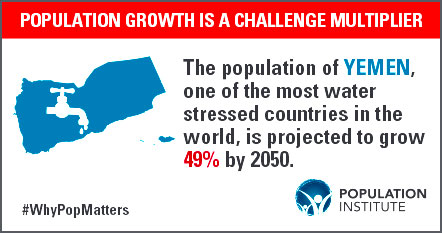
Yemen and Water Crisis
What is the main reason behind the expected water depletion in Yemen which would make the country as an abandoned one in the future?
What about the Future?
Problems concerning water and sanitation in Yemen are numerous, serious, and intricate. Many academic and field researches have been done and most of them refer to mutual points and predictions about water and its scarcity in Yemen. Among the most serious and dangerous points is that Yemen could have a drastic or even a complete water depletion within two or three decades from now and several cities could be totally deserted including Sana’a—the capital city of Yemen. This would actually happen if no thoughtful and earnest steps would be rapidly taken from the people and the government all the same. Unfortunately, the current civil war complicates all efforts towards such thought and renders the situations as they are and maybe worse than before. Moreover, the weak central government, the high percentage of illiterate people, and the frequent instability in Yemen have all contributed affirmatively and still contribute until today in worsening the phenomenon. It also creates other economic, social, and natural problems including:
- Deepening poverty amid people by making them dedicate more money to buy and secure water.
- Creating the problem of leakage of students from schools especially the females for bringing and providing water to their homes instead of learning and educating.
- Consuming frivolously aquatic natural reservoirs (i.e., aquifers) for absurdly irrigating a narcotic useless plant (i.e., the Qat) chewed by Yemenis for alleged enjoyment, delectation, and motivation.
On the other hand, other suggested solutions for the water scarcity’s problem—such as desalination or forbidding Qat planting in Yemen—unhappily do not seem available or accessible for applying because of the social instability, the fragile local economy, and the feeble frequent governments of the country.
It seems that no one currently cares at all about the expected depletion of water in Yemen in general or about the poor people in specific who really need pure water to drink and wash up. It seems also that the current, old, and maybe the coming governments would have the same negative and ineffective policies and strategies about the water problems in Yemen. These governments would be forced to encounter instead other political and economic burdens which would make other problems such as water crisis as a more marginal and insignificant. These severe problems also could force downtrodden Yemenis along with their families and children in the coming centuries to compellingly abandon their home country. The country which was known in the past as the Arabia Felix only for its fertility of land, richness of rains, and also goodness of people.


